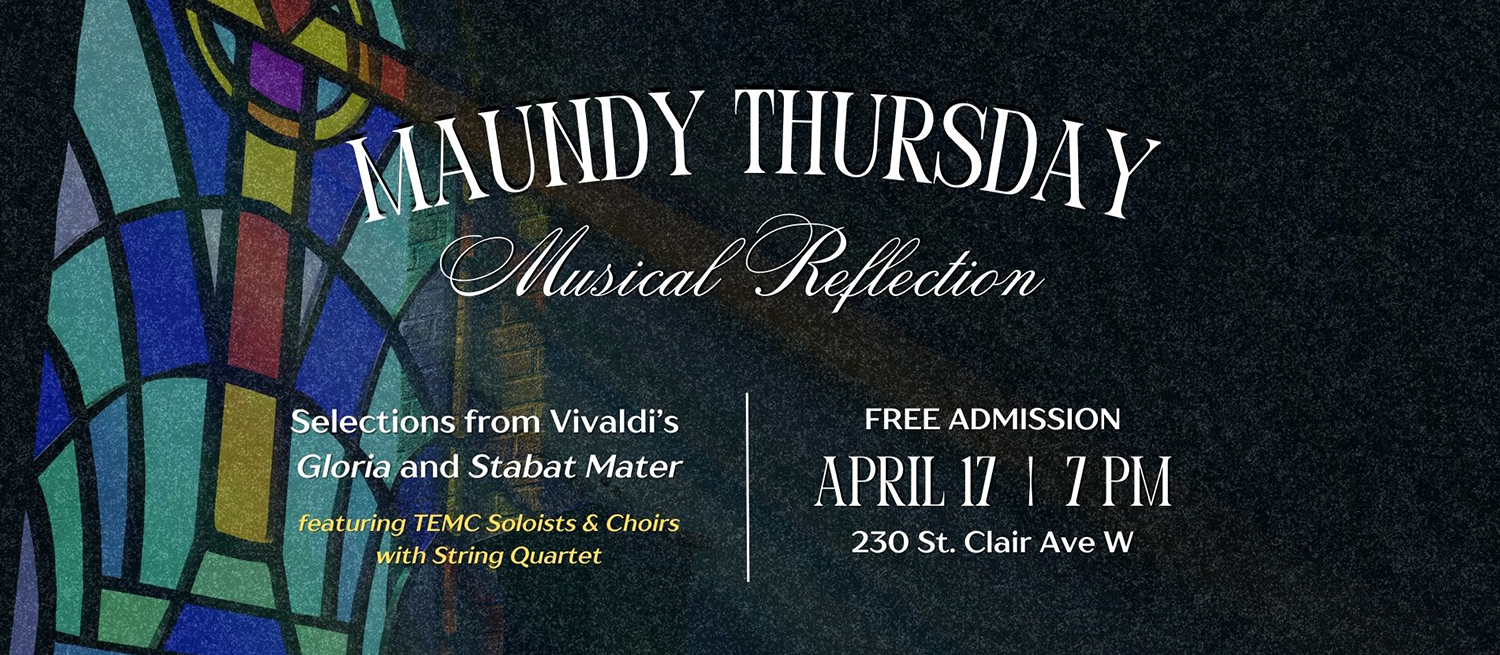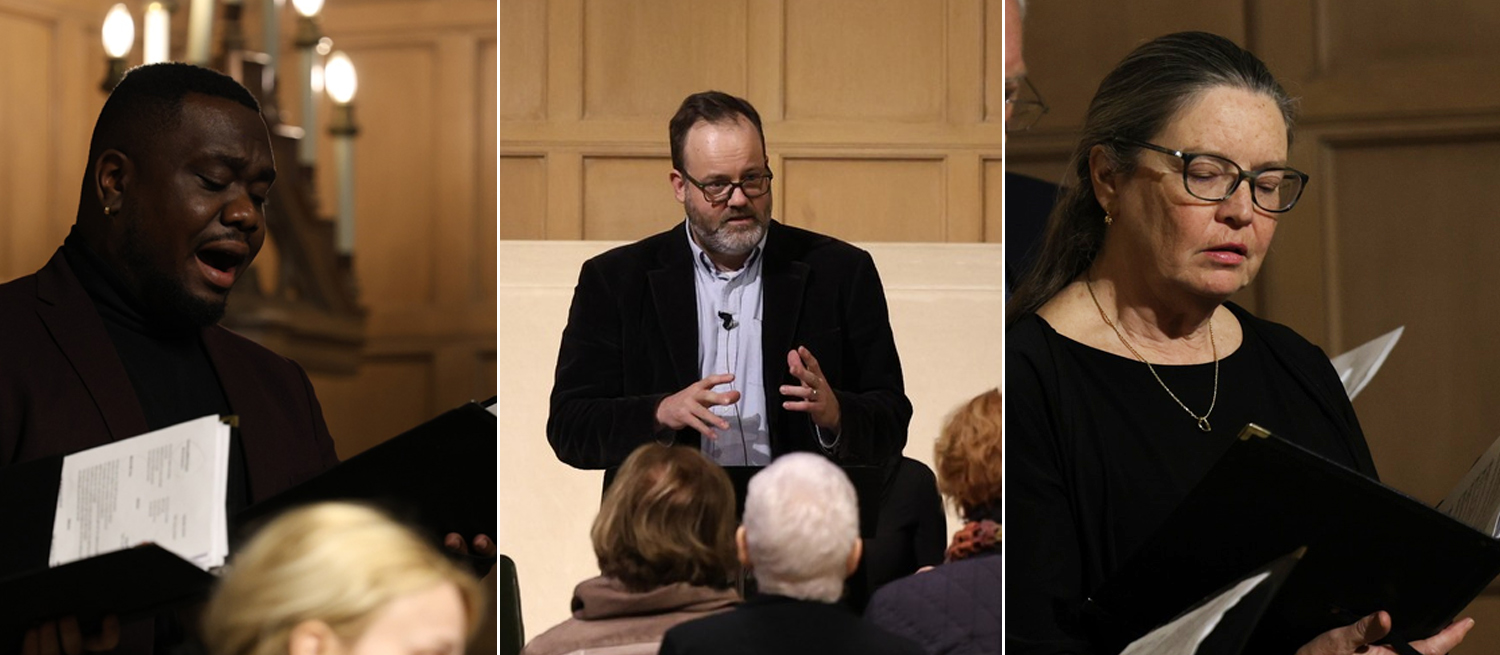We are grateful to have Ryan McDonald (TEMC, alto) curate a meaningful Maundy Thursday musical reflection for us once again—now for the third time. Read the program note and join us on Thursday, April 17 at 7:00 p.m. for an evening of inspiring music and thoughtful messages as we prepare our hearts and minds in prayer during Holy Week.
– Elaine Choi, Jason Byassee
Guest blog post by Ryan McDonald
Even the liturgy fasts during Lent!
The Lenten season is characterized by a notable liturgical absence. Specifically, the hymn "Gloria" (Glory to God in the Highest) is omitted throughout the 40 days of Lent. The "Gloria" is a hymn that exalts the arrival of the Lord, echoing the words of the angels at Christ's birth. During Lent, the Church spiritually revisits a time of exile for God's people, anticipating the coming of the Messiah to deliver them. It mirrors the season of Advent in its sense of longing and hope, but instead of awaiting Christ's birth in Mary’s womb, Christians look forward to His second "birth" from the tomb.
The formal parts of the Catholic liturgy are especially important during Lent because they serve to help the faithful enter into a deeper state of repentance, reflection, and preparation for the celebration of Easter. Lent is a season of penance, fasting, prayer, and almsgiving, and the liturgy provides the structure and guidance to focus on these practices in a more profound way. Here are a few reasons why the liturgy is crucial during this season. The structure of the liturgy, including prayers, hymns, and rituals, helps to frame the season of Lent within the larger narrative of salvation. The liturgy highlights the themes of repentance and conversion, which are central to the Lenten journey, drawing participants into a communal experience of renewal.
Early medieval composers, whose identities were often not recorded, created chant settings for the Mass, including Gregorian chant. Gregorian chant, which was standardized by Pope Gregory I (hence the name), forms the foundation of the Mass music used in the Western Christian liturgy as we know it today. Composers throughout history have been inspired to set the parts of the Christian mass as they attempted to strengthen the listeners connection with God.
Perhaps the most famous and recognizable instance of this is Antoni Vivaldi's Gloria. Vivaldi's Gloria in D major, RV 589 composed around 1715, is a jubilant and expressive setting of the Gloria text. The work is particularly notable for its lively rhythms, bold orchestration, and striking contrasts between the choral sections and solo passages. Vivaldi composed this work for the Ospedale della Pietà, an institution for orphaned girls in Venice where Vivaldi worked as a music teacher. Although the Gloria may have been used for special liturgical occasions, it was not written for an everyday Mass, but rather for feast days or major celebrations.
While most audiences will instantly recognize the opening passage of the first movement, Gloria, what does it mean to experience Vivaldi’s Gloria with no Gloria? This masterpiece reaches such emotional highs and lows, emblematic of the moments Christ and his followers experienced in the days leading up to his crucifixion and death.
The Maundy Thursday performance will feature Vivaldi’s Gloria with the omission of the Gloria. In its place, we include the opening movement of another of Vivaldi’s musical settings, the Stabat Mater. The Stabat Mater is a 13th-century Christian hymn to the Virgin Mary that portrays her suffering as mother during the crucifixion of her son Jesus Christ.
As we wait for Christ's return, we invite you all to join us again on Easter Sunday as our church celebrates the return of Jesus as we perform the missing piece of Vivaldi's seminal work, the Gloria.






